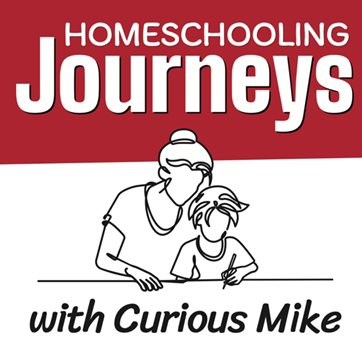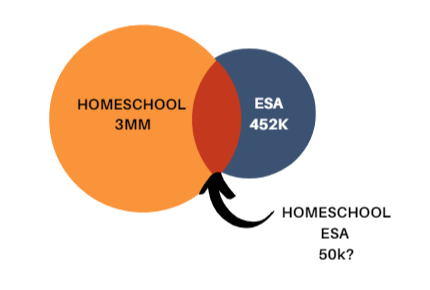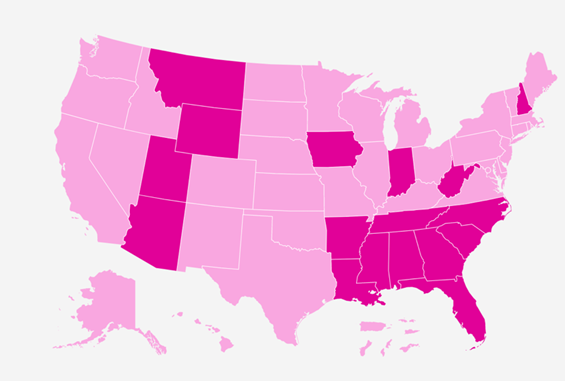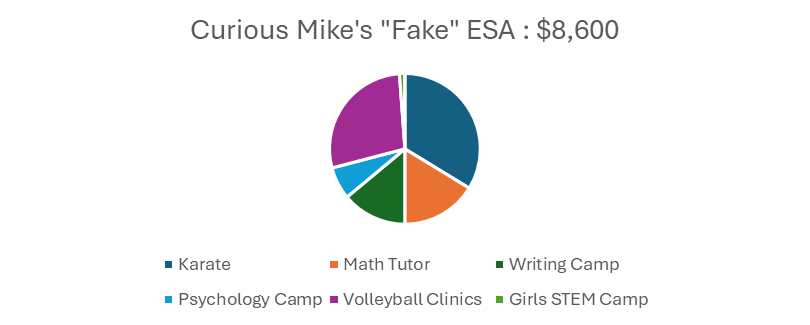Play the latest episode:
Homeschooling Journeys with Curious Mike was an eight episode podcast from Pioneer Institute, recorded in Fall 2024.
Listen to the episodes on Spotify here. Or listen on Apple Podcasts here. Additionally, I have linked the eight episodes below.
Producer Avonlea Cummings and I (Mike Goldstein) met parents navigating two trends: homeschooling and Education Savings Accounts, or ESAs. These are annual flex spending accounts of $4,900 to $8,000 per year per child. ESAs help homeschool parents turbo-charge their kid’s experience.
How do parents spend these funds?
Often the first $1,000 or so of an ESA is spent on curriculum, books, computers, and the like. After that, parents mostly buy experiences from educators: online literature classes, bass guitar lessons, 1 on 1 math tutoring, special education help, rock climbing, ju-jitsu.
Daniella is an “Aspirin Parent” in Arizona. She noticed her kid was struggling in school; she had a Mama Bear reaction and pulled him; homeschooling was the aspirin.
Andreina and Mariana are sisters from Venezuela, now “Vitamin Parents” in Florida. Their kids were doing fine in traditional school, however homeschooling was the vitamin whereby they go from good to great.
Katie lives in West Virignia, where she’s navigated “ESA friction” – including a trip to the state Supreme Court.
Tiffany moved from Florida to West Virginia; she was stunned to realize her son needed phonics tutoring, and moved quickly to fix things.
A cool-if-nerdy part of the ESA story is the Supply Side: unleashing entrepreneurial educators, unconstrained by normal school dynamics, to build specialized offerings.
Toni and Uli are the husband and wife duo who created Surf Skate Science, which is on the receiving end of ESAs. They teach science at beaches and skate parks.
Alicia’s Project Flourish is the most modern, organic home ec class that you’ve ever heard of, run out of her backyard garden.
Finally, Education Navigator’s Tim Daly shares some perspective on ESAs.
The Episodes
Five Moms who use ESAs for homeschooling:
- Daniella in Arizona.
- Katie in West Virginia
- Tiffany in West Virginia
- Mariana in Florida
- Andreina in Florida (twin to Mariana)
Two Educators who Receive ESAs:
- Toni and Uli’s Surf Skate Science
- Alicia’s Project Flourish
One Pundit:
- Tim’s Take
What is an Education Savings Account (ESA?)
How do ESAs allow homeschooled kids to get learning experiences that otherwise they simply wouldn’t have?
A. Homeschoolers number roughly 3 million kids (estimates vary). Families typically pay learning expenses out of pocket.
B. EdChoice: 326,000 kids are funded through Education Savings Accounts (ESAs); Tax-credit ESAs fund another 126,000. So: 452,000 total. Most of these families use the ESA to pay for private school tuition (not homeschooling). EdChoice describes each of the 17 states with ESAs, and update their website frequently (this is a rapidly evolving landscape).
EdChoice’s map showing 17 states with ESAs; homeschoolers are not eligible in several of these.
C. Some parents fit into both categories. They receive an ESA but don’t use it for private school tuition – they homeschool. Their ESA goes towards approved expenses. They are “ESA Homeschoolers” though nobody calls them that.
How many of these families are there? To the best of my knowledge, nobody knows. My estimate as of June 2024 is 50,000. I’m hoping readers will correct me!
This estimate may double or triple fairly soon. In 2024, Florida, Arizona, New Hampshire, and West Virginia all had ESAs for homeschoolers. Wyoming, Georgia, Utah, South Carolina, and Louisiana will start programs in 2025. And maybe Texas.
How do homeschool parents use ESA funds to help their kids thrive? These are the stories I will chase and share. I’m interested in the on-the-ground reality, rather than the politics. Below I “park” the political debates. They’re important. But you can read them elsewhere, from writers who know what they’re talking about.
About Curious Mike
I come at school choice from several angles: Founder of a Boston charter school, advisor to some micro schools, CAO of an African private school network, designer of a Math Tutor Lab in India, tutor of a homeschool student, and caffeinated operator of a (mediocre) Covid-era “Daddy Home School,” which I wrote about here, here,and here.
Back when I was a charter school leader, our teachers poured their souls to try to reach disengaged kids like the ones that guests Tiffany and Daniella describe. Teachers ate lunch with kids, tutored them after school, built parent relationships with phone calls, and showed up for their ball games. Yes, some kids responded to that outpouring of teacher effort. But other kids persisted in really resisting the typical school experience. Try as we might, we never had a good answer for these children. If a kid is lucky enough to have a capable homeschool parent, a new door opens to flourishing.
Meanwhile, speaking as a dad, we don’t get an ESA but we did spend $8,600 this year on ESA-like enrichment items, like Andreina and Mariana describe. We’re fortunate we can afford this out of pocket. I’d like every family to have these options.
I share our budget because I think most people broadly agree that experiences are “good for kids” – my wife and I feel lucky to provide them, and want parents with less means to also provide these options to their kids.
I love when 1-on-1 help gets to a struggling or bored kid (I’ve tried to scale tutoring inside of schools; it’s uphill politically). I beam when kids get connected with something they like or love – swimming, piano, metalworking, ancient Roman history – and ESAs are one path there. Some homeschool skeptics have broadly worried about socialization; ESAs often unlock social activities.
I wrote about ESAs here for Fordham Institute. My take was that both parents and traditional school teachers should both have more choices. Centralized choices about curriculum and so forth can work – I’ve done that too in a very technocratic, data driven way – but it’s rare. Usually teacher freedom is the way to go, whether it’s a parent homeschooling teacher or a traditional teacher.
I ask lots of K-12 questions by nature. Sometimes I work with Harvard and MIT economists to answer them – with randomized control trials. As yet, I’ve not seen any empirically strong RCTs on ESAs. We don’t really know the tradeoffs. Sometimes I just try to meet people and ask them for their stories – that’s what we’re doing with Homeschooling Journeys. My full bio is here.
Critiques
Not everyone thinks these ESAs are a good idea.
Vox skeptical take here.
Homeschoolers themselves are mixed on ESAs: some worry they might lose freedom and face more regulation.
Explainers
Jason Bedrick and Corey DeAngelis: ESAs Save Arizona Money in Wall Street Journal.
ESA Implementation in Arizona here. Lots of juicy details.
Study of 2021 Education Savings Accounts in Florida here.
Cato Institute essay.
Related Pioneer Institute Podcasts and Essays
Bernita Bradley podcast about Homeschooling in Detroit
Patricia Puertas Rucker podcast about ESAs in West Virginia (16:55)
Matt Chingos podcast about ESAs (22:12)
Cara Candal paper on how ESAs could work in Massachusetts




